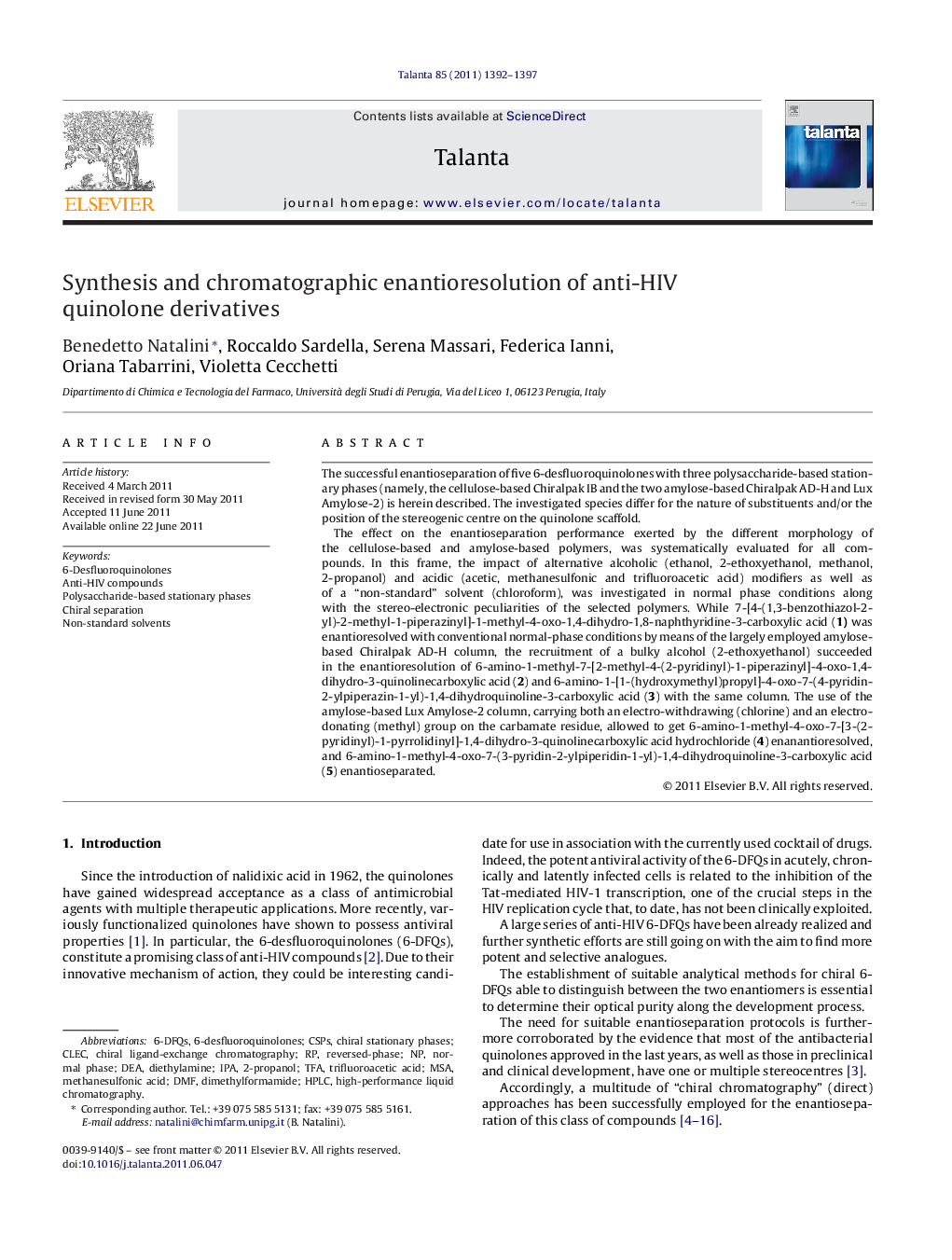| Article ID | Journal | Published Year | Pages | File Type |
|---|---|---|---|---|
| 10560499 | Talanta | 2011 | 6 Pages |
Abstract
The effect on the enantioseparation performance exerted by the different morphology of the cellulose-based and amylose-based polymers, was systematically evaluated for all compounds. In this frame, the impact of alternative alcoholic (ethanol, 2-ethoxyethanol, methanol, 2-propanol) and acidic (acetic, methanesulfonic and trifluoroacetic acid) modifiers as well as of a “non-standard” solvent (chloroform), was investigated in normal phase conditions along with the stereo-electronic peculiarities of the selected polymers. While 7-[4-(1,3-benzothiazol-2-yl)-2-methyl-1-piperazinyl]-1-methyl-4-oxo-1,4-dihydro-1,8-naphthyridine-3-carboxylic acid (1) was enantioresolved with conventional normal-phase conditions by means of the largely employed amylose-based Chiralpak AD-H column, the recruitment of a bulky alcohol (2-ethoxyethanol) succeeded in the enantioresolution of 6-amino-1-methyl-7-[2-methyl-4-(2-pyridinyl)-1-piperazinyl]-4-oxo-1,4-dihydro-3-quinolinecarboxylic acid (2) and 6-amino-1-[1-(hydroxymethyl)propyl]-4-oxo-7-(4-pyridin-2-ylpiperazin-1-yl)-1,4-dihydroquinoline-3-carboxylic acid (3) with the same column. The use of the amylose-based Lux Amylose-2 column, carrying both an electro-withdrawing (chlorine) and an electro-donating (methyl) group on the carbamate residue, allowed to get 6-amino-1-methyl-4-oxo-7-[3-(2-pyridinyl)-1-pyrrolidinyl]-1,4-dihydro-3-quinolinecarboxylic acid hydrochloride (4) enanantioresolved, and 6-amino-1-methyl-4-oxo-7-(3-pyridin-2-ylpiperidin-1-yl)-1,4-dihydroquinoline-3-carboxylic acid (5) enantioseparated.
Related Topics
Physical Sciences and Engineering
Chemistry
Analytical Chemistry
Authors
Benedetto Natalini, Roccaldo Sardella, Serena Massari, Federica Ianni, Oriana Tabarrini, Violetta Cecchetti,
